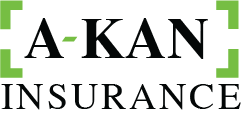Handling Falls, Slips, & Trips in Small Businesses
As slips, trips, and falls are among the most frequent workplace injuries and the main source of workers’ compensation claims in Canada, it is crucial for small businesses to recognize the hazards involved.
Small businesses face numerous risks when it comes to managing slips, trips, and falls. These accidents can occur anywhere, but they are especially prevalent in workplaces that involve walking or standing for long periods, slippery or uneven surfaces, or hazardous conditions.
Here are some of the key risks associated with managing slips, trips, and falls in a small business
1. Employee Injuries Slips, trips, and falls are among the leading causes of workplace injuries. These accidents can result in bruises, cuts, broken bones, head injuries, and more. 2. Reduced Productivity When an employee is injured due to a slip, trip, or fall, it can lead to reduced productivity. The injured employee may need to take time off work to recover, which can affect your business's bottom line. 3. Increased Insurance Costs If your business has a high number of slip, trip, and fall incidents, your insurance costs may go up. Insurance companies view slip, trip, and fall accidents as a risk, and they may charge you higher premiums to cover that risk. 4. Legal Liability If an employee or customer is injured on your business's property due to a slip, trip, or fall, you could be held legally liable for their injuries. This could result in costly lawsuits and damage to your business's reputation. 5. Lost Customers If your business has a reputation for being unsafe, customers may choose to take their business elsewhere. No one wants to shop or do business in a place where they feel unsafe or at risk of injury.
To manage the risks associated with slips, trips, and falls in your small business, it’s essential to take proactive measures Some strategies you can implement include:
• Regularly inspecting your business’s premises for hazards such as uneven surfaces, spills, or debris.
• Providing appropriate safety gear to employees working in areas where slips, trips & falls are common.
• Installing safety measures such as handrails, non-slip surfaces, and warning signs in hazardous areas.
• Providing regular training to employees on how to recognize and avoid slip, trip, and fall hazards.
• Encouraging employees to report any hazards or incidents they encounter on the job.
Why Risk Management?
The prevention, reduction, and management of risks are continual processes that safeguard customers and employees from possible harm and can lower the expenses connected with workplace accidents. You may develop a strong risk management strategy with the assistance of your knowledgeable broker at A-Kan Insurance.
Tips To Prevent & Manage
• Keep Work Areas Clean and Organized • Use Non-Slip Flooring • Provide Adequate Lighting • Provide Proper Footwear • Educate Employees
Slips, trips, and falls pose significant risks to small businesses. These accidents can lead to employee injuries, reduced productivity, increased insurance costs, legal liability, and lost customers. By implementing proactive measures like Life Insurance, Health Insurance etc,, you can help ensure the safety of your employees and customers while protecting your business’s bottom line.
To know more about the insurance that can help you manage the risk, contact us.



